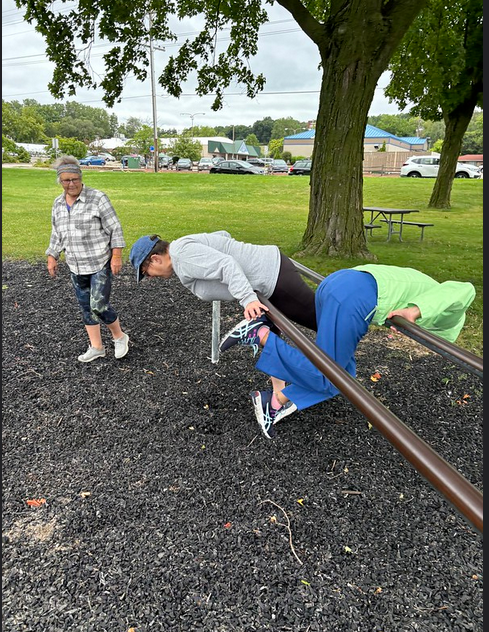Teaching Dance in Retirement: Deb Kohlwey's Story
- Erin Eleu
- Aug 9, 2024
- 3 min read

Deb Kohlwey is an inspiring example of a retiree who has found a fulfilling second act in life by transitioning from teaching to instructing dance classes. We delve into her journey, the significance of her work, and her insights for anyone considering a similar transition.
Discovering a New Passion
Deb began her journey into dance instruction after retiring from a 33-year career as an English teacher. While she initially thought retirement would be spent leisurely with family, an unexpected opportunity reshaped her plans. After attending a “Ballroom Basics for Balance” class, Deb found herself captivated by the joy of dance and the positive physical and social impacts it brought to her life. This newfound passion led her to pursue training in the program and eventually become an instructor.
What is Ballroom Basics for Balance?
Ballroom Basics for Balance is a dance program designed to improve balance and overall fitness. The classes incorporate various dance styles like waltz, foxtrot, line dances, and more contemporary forms. The philosophy behind the program is simple yet profound: through joyful movement to music, participants not only receive a robust physical workout but also experience emotional and social benefits.
Transitioning to Teaching Dance
Although Deb had extensive teaching experience, she found instructing dance required a different approach. “Moving your body and telling people what to do with their body in space is different,” she explains. Adapting to this new teaching method meant learning how to give effective physical commands, accommodating participants’ varying physical abilities, and ensuring everyone could follow the steps. Through practice, mentoring, and personal adaptability, Deb found her comfort zone in dance instruction.
Creating a Joyful and Social Learning Environment
One of the most endearing aspects of Deb’s classes is the emphasis on joy and social interaction. With rules emphasizing fun and the flexibility to make mistakes, participants feel encouraged and motivated. “The rules for the class are to have fun, number one,” Deb states. Additionally, the social aspects of the class—sharing stories during warm-ups or discussing favorite dance songs—foster a sense of community and connection among participants.
Balancing Teaching with Personal Life
Deb’s dance instruction schedule is deliberately designed to offer flexibility, allowing her to travel and engage in other interests. By teaching through organizations like the Madison Community School of Recreation, she can focus on delivering quality instruction without the administrative burdens of independently managing classes. This balance ensures she remains passionate and committed to both her personal life and her teaching.
Advice for Aspiring Second Act Professionals
For those contemplating a similar second act, Deb’s advice is clear and encouraging: “Try it.” She suggests shadowing a seasoned instructor to gain insights and confidence. Importantly, she emphasizes not being dissuaded by self-doubt. With a teaching background, anyone can adapt to instructing new subjects, whether physical or otherwise. By choosing the right organizations to support your endeavors, much of the logistical stress can be alleviated.
Deb's transition from a long career in teaching to becoming a dance instructor exemplifies how retirement can be a time of growth, joy, and new adventures. Her story is a testament to the power of finding new passions and the immense benefits of social interaction and physical activity in later life. If you’re considering a similar path, take inspiration from Deb’s journey—embrace the possibilities of your second act.
Links for Deb:




Comentarios